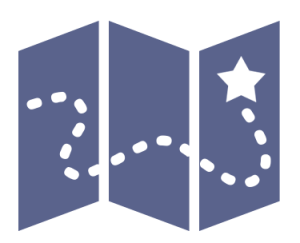
Roadmap: Play Chords By Ear
This is a preview of a Musical U Roadmap.
Roadmaps are a “big picture” guide to developing a particular musical skill. Learn more about Roadmaps here.
Learning to easily identify the chords to a song just by listening to it is an important skill for any musician. If you play chords on your instrument, it frees you from sheet music or looking up the chord chart to play a new song. If you improvise it tells you clearly which notes will sound good and fit well. And even if you do neither of those things, having a keen understanding of the harmony in music is vital for good musicianship and confidence in music.
This roadmap covers an approach which will allow you to quickly play the chords to a large number of songs by ear.
There are many types of chord and the possibilities for chords in a song are practically endless so it is easy to get overwhelmed and make slow progress trying to play chords by ear.
Fortunately we can take advantage of musical conventions to focus on the most commonly-used chords and progressions. This will let you learn to play chords by ear much more efficiently than traditional approaches.
The main topic to explore for this skill is Chord Progressions. You may find that some Chord or Interval modules are also helpful as you develop this skill.
Requirements
To use this roadmap effectively you should complete the following modules before you start:
Phase 1: Fundamentals
Phase Accomplishments
- Understand how chord progressions work.
- Recognise Major and Minor chords by ear.
Before starting to practice recognising chords by ear it is important to ensure you’re clear on the fundamentals.
Begin with the Ear Expansion: Chords module which explains the basic theory behind chords, the different types of chord, and the different ways you can train your ear to recognise them:
Then you can move on to the corresponding Ear Expansion module on Chord Progressions. A “progression” is just a sequence of chords in music – but you’ll learn a lot more in this module!
Now you’re ready to learn about the “shortcut” method which takes advantage of musical conventions to let you play most songs by ear long before you have mastered every type of chord and progression:
Here is an exercise you can do to start exploring these common chord progressions on your instrument:
These exercises will help you get to know the sounds of these progressions, give you fluency transitioning between them on your instrument and help you learn what the most important chords are in each key.
The last fundamental to put in place is distinguishing major from minor chords. Depending on your musical background this may be easy for you, or it could be challenging.
Use the Chord Recognition: Triads module, but for now you don’t need to cover the full range of lessons and difficulty levels. For playing chords by ear you only need to master the difference between major and minor triads for now.
If you have difficulty
Most of this phase is about learning what you need to, so if you have questions or aren’t understanding, the best place to ask is in the Discussion for the corresponding module.
If you have difficulty distinguishing major and minor triad chords you may need to spend some time developing your core sense of relative pitch before trying to play chords by ear. You can use Interval modules for this.
If you have a question during this phase which doesn’t seem to fit either of these just ask in your Progress Journal or in the Discussion for this roadmap!
Start This Roadmap Today!
Get instant access to the full Roadmap and every training module included when you join Musical U today.
Phase 2: Playing By Ear Preparation
Phase Accomplishments
- Understand exactly what “playing by ear” is and how it works.
- Learn how to find the key of a song by ear.
Playing music by ear is a topic which causes a lot of confusion and misunderstandings among musicians.
Before continuing with your own play-by-ear training, take a bit of time to explore two modules which will help you get 100% clear on what “playing by ear” is – and what it isn’t.
The Start Playing By Ear module gives you the full low-down on playing by ear, clarifying what this ability involves, the various skills required to do it, and helping you take your first steps in playing by ear yourself.
Then check out the Play-By-Ear Process module which provides examples of a musician going through the process of figuring out songs by ear.
As these two modules explain, knowing the key of a song can greatly accelerate the process of figuring out the chords. In Finding the Key you’ll learn a simple 4-step process to find the key of a song by ear:
Begin trying to use this process now, and then continue developing your key-finding skills as the next Phases progress.
If you have difficulty
This phase is about understanding the overall process of learning to play by ear.
You do not need to master the examples in the Play-By-Ear Process module or the skill of finding the key by ear.
If you are confident you have understood the message of Start Playing By Ear and have a feel for how finding the key of a song and playing by ear work, you should feel free to move on.
Start This Roadmap Today!
Get instant access to the full Roadmap and every training module included when you join Musical U today.
Phase 3: 3-Chord Songs
Phase Accomplishments
- Identify the progression in songs using the most common 3 chords.
- Play 3-chord songs by ear.
With the fundamentals in place, it’s time to move onto the real training!
The core resource for this stage is the Chord Progression Recognition training module. For now you should focus only on the lessons which cover the “I“, “IV” and “V” chords which (as you know from Phase 1!) will allow you to play 3-Chord songs by ear.
You can also use the “training” and “testing” tracks for instrument practice:
Now you should feel confident distinguishing the I, IV and V chords in simple artificial examples. Great! It’s time to move on to something a bit more realistic.
The Progression Practice modules let you practice recognising chord progressions in real musical arrangements in various styles, including solo piano and guitar, rock and pop.
You should now be starting to notice I-IV-V progressions in the music around you each day and although there will be chords and progressions you can’t yet figure out, you’ll probably be surprised by how much does start to make sense.
It’s a good idea to pause at this stage and really solidify the skills you have developed so far. It can be tempting to rush ahead to more complex examples, but these simple 3-chord progressions are the backbone of modern music, so take your time and enjoy your newfound understanding of the songs you hear and play.
If you have difficulty
This phase may take some time if you’ve never tried to recognise progressions by ear before. Take your time and try to be patient. If you get your core recognition skills strong you’ll find it much easier when it comes to applying them to real music.
As usual, the best place for questions which are specific to a training module is in that module’s Discussion, and otherwise you can ask in the general Chord Progressions board.
If you find you’re really struggling with distinguishing the I, IV and V chords from each other in the Progression Recognition module, you may want to spend some time developing your core relative pitch using Interval modules. You might also find it helps to use the Basslines: I-IV-V-vi module from the next phase (the I-IV-V lessons only), which can give you a different way to listen out for the changes.
If your question is about overall planning or approach you can ask in your Progress Journal or the discussion at the bottom of this roadmap.
Start This Roadmap Today!
Get instant access to the full Roadmap and every training module included when you join Musical U today.
Phase 4: 4-Chord Songs
Phase Accomplishments
- Identify progressions which use the minor vi chord too.
- Play 4-chord songs by ear.
- Use the bassline to identify progressions.
As you learned in Phase 1, the idea of “3-Chord Songs” can be extended to add the fourth most common chord: the minor vi chord. These “1-4-5-6” chord progressions are everywhere in modern music, and extending your skills to cover the vi chord too will make your skills much more versatile. In this phase you’ll also learn a handy trick for tuning into the chord progression by following the bassline of a song.
Start by returning to the Chord Progression Recognition module, completing the final lesson which introduces the vi chord. You should find that the major vs. minor practice you did during Phase 1 helps you identify the vi chord quite easily.
When you’ve got the hang of simple artificial examples of four-chord progressions, you can move on to the I-IV-V-vi Progression Practice module and extend those skills to more realistic arrangements.
More often than not, the bassline of a song gives you strong hints about the root note of each chord in the progression. This means that learning to follow the bassline by ear can make it much easier to identify the chord progression. Use the Basslines: I-IV-V-vi module to learn and practice this technique:
If you play bass you’re probably already thinking about the following exercise – but note it can be done on any instrument!
If you have difficulty
For most people this phase should go quite smoothly after completing Phase 2. If you are finding yourself getting very confused or struggling to improve, you will probably find it helpful to return to Phase 2 and really firm up your I-IV-V skills before resuming this phase.
The Basslines module is really quite a different approach to add to your toolkit. Some people (e.g. bassists!) will find it easy and helpful, while others may find it quite hard to tune their ear into the low parts in music. Remember that this is an optional extra, so certainly worth trying out, but not essential for your progress. It’s also one which will be most helpful for different people at different times in their training, so don’t be afraid to skip it and return later – or to jump ahead and use this module during Phase 2 as mentioned earlier.
If you get stuck and your question is about a particular module, post in that module’s Discussion. Otherwise you can ask in the Chord Progressions board, or if you need help constructing or adjusting your training plan you can ask in your Progress Journal or the roadmap Discussion.
Start This Roadmap Today!
Get instant access to the full Roadmap and every training module included when you join Musical U today.
Phase 5: Real Music
Phase Accomplishments
- Identify 3- and 4-chord progressions in real music.
- Play along or improvise with 3- and 4-chord progression jam tracks.
The time has come! Now that you’ve developed solid skills in identifying and playing 3- and 4-chord progressions by ear, you can start applying them to real music.
Actually, by the time you reach this phase you will probably find that these progressions have already started jumping out at you in the music you listen to and play. Use the following modules and exercises to actively practice this and make your skills truly musically useful.
The main resource for this phase is the two Unravelling Music modules for chord progressions which help you learn to dissect music tracks by ear.
The first, Popular Progressions, focuses on I-IV-V progressions only. You will find a Learning Guide in the module which explains the different ways you can use the tracks and example clips to learn.
Hopefully you’ve already been combining your ear training with your instrument practice, but even if not, now is a great time to start doing this. You can use the Unravelling Music “jam tracks” in many ways. Here’s one suggested exercise:
Once you’ve got the hang of those tracks you can move on to Classic Chords which uses I-IV-V-vi progressions.
You can branch beyond just recognising the chords and use the progressions to practice improvisation:
If you have difficulty
If you have completed all the previous Phases you should find that 3- and 4-chord progressions are now quite easy to recognise in the real music you hear each day.
You may not be able to always instantly recognise a progression, or even be sure if it’s a I-IV-V-vi progression, but these will both improve steadily with continued practice. So don’t stop now!
You may find that you have difficulty with:
- Particular instruments
- Particular styles/genres
- Songs which use additional chords too
- Applying these skills on your instrument
Each of these can be approached with further exercises. If you need help just post in your Progress Journal or the roadmap Discussion!
Start This Roadmap Today!
Get instant access to the full Roadmap and every training module included when you join Musical U today.

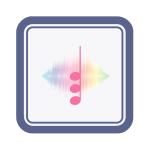 Ear Expansion: Chords
Ear Expansion: Chords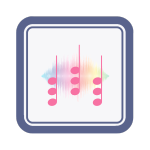 Ear Expansion:
Ear Expansion: 3-Chord Songs
3-Chord Songs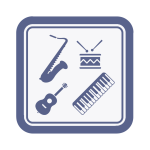 Circle-of-Fifths Play-through
Circle-of-Fifths Play-through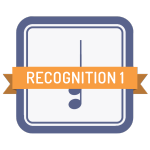 Chord Recognition: Triads
Chord Recognition: Triads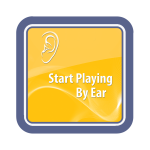 Start Playing By Ear
Start Playing By Ear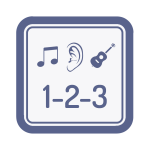 The Play-By-Ear Process
The Play-By-Ear Process Finding the Key
Finding the Key Practice finding the key
Practice finding the key Chord Progression Recognition
Chord Progression Recognition Progression Practice: I-IV-V
Progression Practice: I-IV-V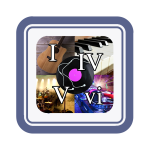 Progression Practice: I-IV-V-vi
Progression Practice: I-IV-V-vi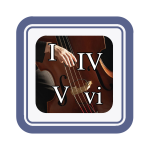 Basslines: I-IV-V-vi
Basslines: I-IV-V-vi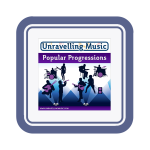 Popular Progressions
Popular Progressions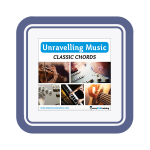 Classic Chords
Classic Chords